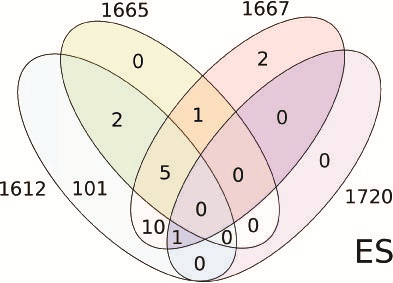OH masers, the first astrophysical maser ever detected in the space, opened an exciting and rapidly growing area of research. As a high-sensitivity survey of OH masers in our Galaxy, the Southern Parkes Large-Area Survey in Hydroxyl (SPLASH) has shown typical features of OH masers. However, due to its limited spatial resolution, it cannot reliably identify the astrophysical objects associated with OH maser emission. Recently, accurate ground-state OH maser positions in the SPLASH pilot region were provided in a work carried out by the research team led by Dr. Andrew Walsh from Curtin University, Australia and the research team led by Dr. SHEN Zhiqiang from Shanghai Astronomical Observatory (SHAO), CAS. This work shed light on the association of different astrophysical objects and these OH masers, which also provide some insights on the research to be carried out by the Tianma Telescope of SHAO. This work has been published in the Astrophysical Journal Supplement Series in Dec. 16, 2016.
Laser is a type of stimulated emission in the optical band. Similar to laser, maser is a type of stimulated emission in the radio band. As the first discovered maser class, OH masers has been well studied and understood. The most common OH masers are ground-state OH masers; emitting at 1612, 1665, 1667 and 1720 MHz. Their properties, such as narrow line width and strong line flux, allow them to be good indicators of the physical and chemical environments of sources. In our Galaxy, they are usually associated with high-mass star formation (HMSF), the circumstellar envelopes of evolved stars (including planetary nebulae, PNe), supernova remnants (SNRs) and occasionally with comets.
“SPLASH, conducted with the Australia Telescope National Facility Parkes 64 meter telescope, simultaneously observed all four ground-state transitions and it has detected about 600 sites exhibiting OH maser emission. Limited by its spatial resolution, it can’t reliably provide accurate positions of OH masers.” Dr. SHEN said. He is one collaborator in this work.
“Therefore, higher spatial resolution observations are needed. The Australia Telescope Compact Array (ATCA) re-observed the sites that SPLASH has detected, with a higher spatial resolution.” QIAO Haihua, the first author of this work, a joint PhD student of SHAO and Curtin University, co-supervised by Dr. Andrew and Dr. SHEN.
“Among large amount of data from SPLASH, we first analysed the SPLASH pilot region, covering around 25 percent of the total SPLASH survey area.” QIAO said, “Out of 196 sites SPLASH detected, ATCA detected OH maser emission in 175 sites. Some sites which show single OH maser in SPLASH turn out to contain multiple masers according to ATCA observations.”
They detected 215 OH masers in all, among which 111 are newly detected. The highly accurate positions of OH masers can be used to classify OH masers into different categories, i.e. HMSF, evolved stars, SNRs and unknown origins. In the pilot region, 64 OH maser sites are associated with HMSF, 122 OH maser sites are associated with the circumstellar envelopes of evolved star (one is associated with a planetary nebula, the work about this source was published in the Astrophysical Journal in 2016 January 20, the report about this paper is in http://english.shao.cas.cn/ns/es/201607/t20160705_165264.html), two sites are associated with SNRs and 27 sites are unknown origins. This new work also did some statistical work about HMSF category and evolved star category. Figures 1 and 2 show the overlap between transitions for HMSF sites and evolved star sites.
Dr. SHEN said, SPLASH can provide some insights on the research for the Tianma telescope of SHAO, since Tianma has the comparable diameter to Parkes. Tianma could be used to do similar research for the northern Galactic plane.

Figure: The overlap between transitions for high-mass star formation OH maser sites (upper) and evolved star OH maser sites. Figure by QIAO et al.
Link to the research paper:
http://dx.doi.org/10.3847/1538-4365/227/2/26
Science Contact:
Haihua Qiao, Shanghai Astronomical Observatory (www.shao.ac.cn), qiaohh@shao.ac.cn
News Contact:
Wenwen Zuo, Shanghai Astronomical Observatory (www.shao.ac.cn), wenwenzuo@shao.ac.cn,34775125